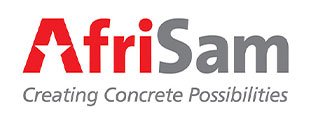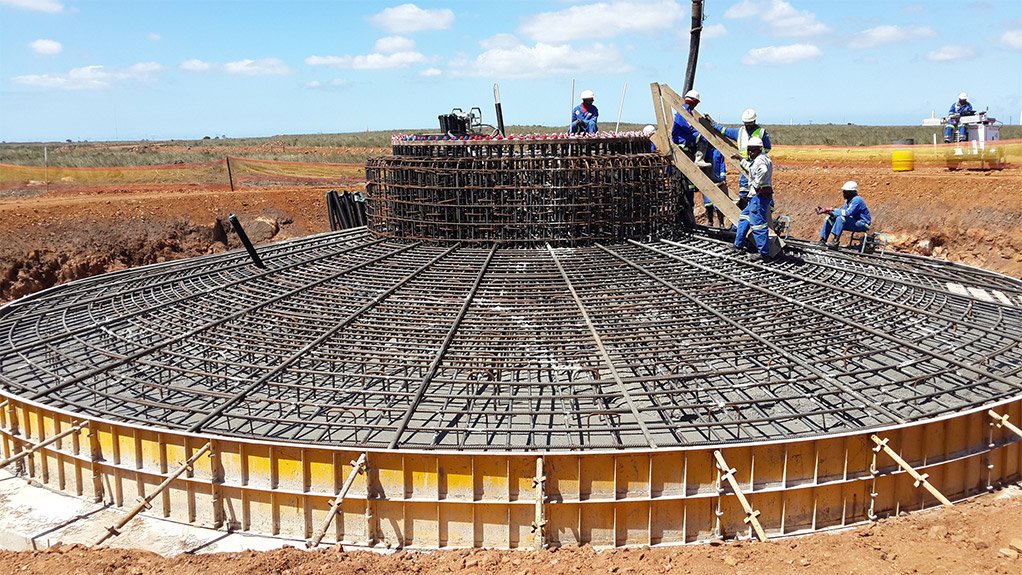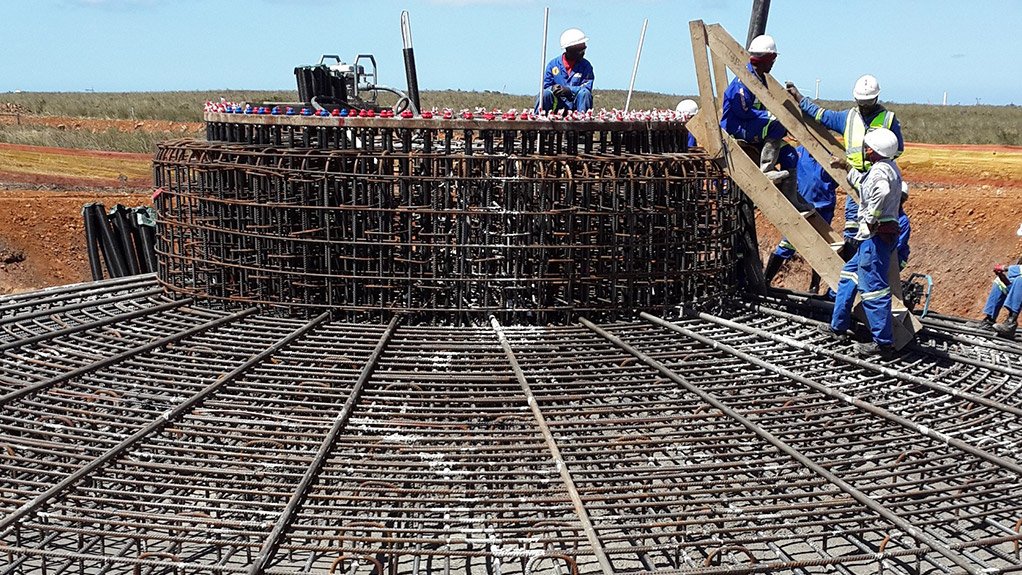

Solid foundations for wind turbines



JEFFREYS BAY WIND FARM Each of the 60 turbine foundations at the Jeffreys Bay wind farm project required approximately 335 cubic metres of concrete
SOLID FOUNDATIONS AfriSam was selected to supply the cement for the Jeffrey Bay wind farm
The supply of 4 000 t of cement for the Jeffreys Bay wind farm posed unique challenges and entailed short deadlines so that electricity generation could begin this month.
The Eastern Cape-based wind farm, with an installed capacity of 138 MW, required the large amount of cement for 60 foundations to anchor as many wind turbines.
Each foundation required approximately 335 m3 of cement, and cement producer AfriSam was chosen to supply the cement.
A consortium for the provision of civils and electrical infrastructure was formed by engineering, contracting and construction services company Murray & Roberts Construction and construction company Concor Civils and Concor Roads & Earthworks, in joint venture with electricity supply company Consolidated Power Projects (Conco), with the contract for one of the continent’s largest wind farm that started in November 2012.
Murray & Roberts Construction’s portion of the project included the construction of 50 km of gravel road, 60 concrete foundations for the wind turbines, route modifications on the N2 highway and the building of an operations and maintenance building, as well as trenching for 200 km of medium voltage cabling to a substation.
Concor Roads & Earthworks project manager Joe Nell says each of the turbine foundations required concrete and the selection of a suitable cement supplier was based on several factors. “We chose AfriSam, owing to our longstanding relationship with the company, the quality of the cement, its suitability for the project, the pricing and its ability to deliver timeously,” he says.
Unique Requirements
Sustainable power company Globeleq is the majority shareholder and is jointly managing the construction of the Jeffreys Bay wind farm. The com- pany is an independent power industry leader in the emerging markets participating in nearly 14 000 MW of generation capacity in more than 25 countries. The project’s consortium partners include Old Mutual, Thebe Investment Corporation, Mainstream Renewable Power South Africa, Jeffreys Bay Community Trust, Enzani Technologies and Usizo Engineering.
AfriSam building, civil and manufacturing sales manager Meredith Jordan explains that the wind farm’s civils and electrical infrastructure consortium selected AfriSam’s HSC 52.5N type of cement, owing to its early strength properties. “The customer required cement that was not only able to provide the high strengths required for the turbine foundations, but that would also expedite the fast-track construction programme as a result of its rapid hardening properties. This versatile cement is cost effective, owing to its workability, strength and durability properties,” says Jordan.
The first batch of the 4 000 t of cement was delivered in March 2013, while the last consignment was delivered in December 2013 before the yearly building and construction shutdown at the end of the year. The bulk of the product was sent from AfriSam’s Ulco factory, about 80 km from Kimberley, in the Northern Cape. “This equates to a lead distance in the order of 1 000 km each time we made a delivery. Our depots in Queenstown and East London were placed on standby as a backup and we were able to meet all our deadlines,” he says.
Nell says the civils and electrical infrastructure project consortium was given ten milestone dates with which they needed to comply. “We were under extreme pressure, but we managed to meet the first nine milestones time- ously. The seamless and expeditious delivery of cement by AfriSam has played a large role in the successful attainment of the turbine foundation deadlines,” says Nell.
Getting the Mixture Right
Murray & Roberts’ Concrete Centre of Excellence was tasked with developing the best concrete mix for the high temperatures generated beneath the turbines. The mix also needed to be durable, so the concrete had a fair quantity of fly ash added to accommodate the demands of the end application.
“We established a concrete batching plant at a commercial quarry close to the project and the concrete was transported to various locations on this 3 800 ha site. It was critical to micro manage the interface with all parties, including AfriSam, Conco and German multinational eng- ineering and electronics conglomerate Siemens, to ensure that the specified delivery periods were concluded without incident.
“Apart from the huge physical extent of the project’s footprint, at peak we had 650 people on site from the civils and electrical consortium and Siemens, leading to complex logistical planning,” Nell adds.
He points out that all the roads and the foundations are now completed and the environmental rehabilitation process is under way. “Ninety seven percent of the cabling installation has been completed and the substation was energised on December 6, 2013. Siemens erected 70% of the turbines and the first two circuits were commissioned prior to the December 2013 shutdown,” says Nell.
All component deliveries were due to be completed in February and the erection of the remaining turbines was due for completion before the handover in April.
“Joe Nell and his team made the logistics easy for AfriSam by having all the necessary doc- umentation in place prior to deliveries. The healthy and collaborative relationship we developed with the project team was a huge enabler in the smooth workflow process,” Jordan concludes.



